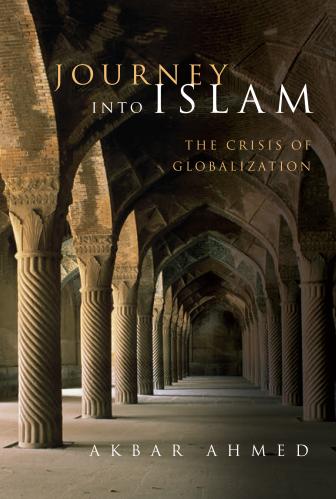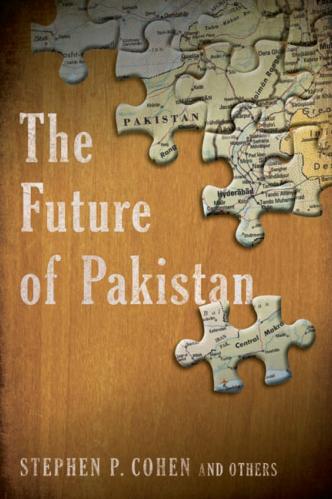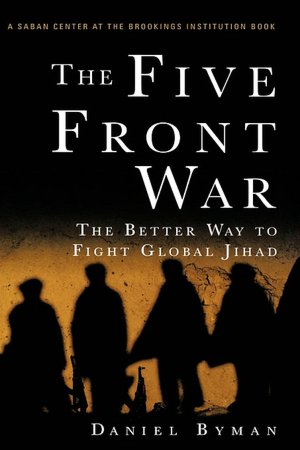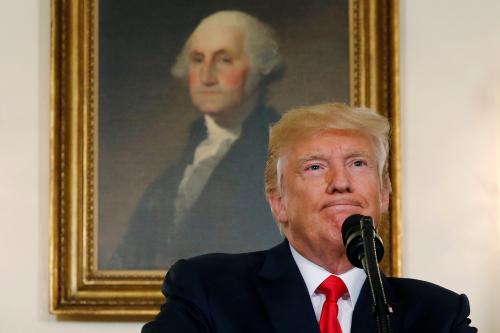President-elect Trump and key advisers appear to scoff at approaches to counter violent extremism. Is CVE is now politically dead? Chris Meserole offers a more humble approach for those who still believe in CVE. This post originally appeared on Lawfare.
For fifteen years now, the United States has actively and intently sought to combat al-Qaida and its various offshoots. For the most part, that fight has occurred under the aegis of “counterterrorism”—a broad and far-ranging concept, for sure, but one that has largely cohered around locating, disrupting, and destroying Salafi-jihadist militant networks.
The counterterrorism approach has met with many successes. The original leadership of al-Qaida is now almost entirely dismantled, and Osama bin Laden himself enjoys no more than the small solace of thalassic repose. But in the past few years, the limitations of counterterrorism have come into plain view. In focusing on the tactical level alone, counterterrorism assumes that to defeat Salafi-jihadism overall we need only destroy each and every extant Salafi-jihadist organization. The emergence of successor groups like Boko Haram and the Islamic State put the lie to that assumption. If we are to rely on counterterrorism alone, we are destined to play an endless game of global whack-a-mole.
In a bid to avoid that fate, policy analysts and practitioners have recently shifted their focus to “countering violent extremism,” or CVE. The goal is not so much to supplant counterterrorism as to supplement it. Whereas the counterterrorism frames the policy response to Salafi-jihadist violence in terms of tactics, CVE does so in terms of ideology and grievance. We cannot hope to defeat Salafi-jihadism, the thinking goes, unless and until we discredit the ideas and concerns that lend it animus. For instance, consider the Aarhus program in Denmark, or the Center for the Prevention of Radicalization Leading to Violence in Montreal, Canada. The former seeks to de-radicalize and re-integrate violent extremists; the latter intervenes with at-risk individuals before extremism fully takes root. Or consider USAID’s project to bolster community resilience in places like Niger and Somalia. These programs share an effort to engage Salafi-jihadism through ideas and civic engagement rather than through force alone.
All of which brings us to the recent election. To the extent that the campaigns offered a coherent debate on foreign policy, that debate hinged on the competing assumptions of counterterrorism and CVE. On the one hand, Hillary Clinton signaled early and often that she intended to build off the momentum Obama had lent CVE, first in a White House summit he convened in early 2015 and subsequently in a series of high-profile bureaucratic moves. Clinton’s rhetoric and platform made clear not only that she viewed the conflict with Salafi-jihadism as fundamentally a conflict of ideas, but that, as Khizr and Ghazala Khan so powerfully demonstrated at the Democratic National Convention and elsewhere, Muslim beliefs are neither illiberal nor fixed.
On the other hand: Trump. As a candidate, Trump espoused famously few policies, but one of them was his now notorious “Muslim ban,” which has since, allegedly, morphed into a “Muslim registry.” The precise contours of that policy remain unclear; they may be dropped altogether. But in one sense the details don’t matter nearly as much as the rhetoric, and in that Trump has been crystal clear: he aims to speak openly and forcefully of “radical Islam”—and to take little care, as he utters that turgid phrase, to distinguish qualifier from subject. In that regard, a well-known tweet from Trump’s former campaign adviser, Lt. Gen. (ret.) Michael Flynn, could not have been more in keeping with Trump’s main foreign policy message: “fear of Muslims is RATIONAL.” Couched in that tweet isn’t just the assumption that all Muslims are the same; it’s that because all Muslims are the same, we must engage them through the security lens of fear, rather than the more diplomatic lens of ideology. If all Muslims are the same, then they must be identified, banned, and fought. What good is a war of ideas if ideas cannot change?
And so, with Flynn now tapped to be National Security Advisor—and with Mike Pompeo, who by all accounts holds quite similar views, set to be ensconced at Langely—the only war left is a war of might.
In the face of that war, how should proponents of the CVE approach respond?
I’d argue the CVE community should focus on three things:
1. Do no harm. The Trump administration may well force the State Department and Department of Homeland Security to retrench and tuck all CVE programs back under a counterterrorism banner. More likely, though, I suspect the administration will keep the rhetoric of countering extremism, but repurpose the programs themselves. Many Muslim communities are already suspicious of CVE efforts that do not cede planning and operation to local stakeholders, on the grounds that they are little more than surveillance operations. If the Trump administration tries to shoehorn counterterrorism surveillance into CVE, then the results will be counterproductive at best and dangerous at worst. CVE practitioners caught within such programs should either publicly push back against them, or alert those who can.
2. Go local. Several days after the election, the Center for International and Strategic Studies released the report of a year-long commission on CVE. The commission was chaired by Tony Blair and Leon Panetta, advised by Farah Pandith and Juan Zarate, and managed by Shannon Green; it’s fair to say its views represent the consensus of the CVE community. Many of the report’s eight key recommendations, such as “aligning policies and values” and “exerting White House leadership,” would require buy-in from the Oval Office to implement effectively. But at least one of them, “investing in community-led prevention,” does not. Political leaders often have greater leeway at the municipal level, particularly when unencumbered by federal funding and bureaucracy. As such, many local and city officials may be free to enact and implement innovative approaches to CVE, albeit on a limited scale. Non-governmental researchers, funders, and practitioners should spend the next four years honing in on community-led CVE in metropolitan areas.
3. Learn. As my colleague Bobby McKenzie noted recently, we know remarkably little about “what works” when it comes to countering radicalization. At the same time, there’s been a proliferation of expensive CVE programs and projects. If CVE programming becomes untenable, the focus should shift to research: among the programs that were launched over the past several years, what worked well? What empirically-driven best practices can we adopt? And what new interventions and designs make the most sense going forward? Over the next several years, the CVE community should work hard to establish consensus on those issues, so that in 2021, provided Trump is ousted, his successor can approach the issue with a clean slate.
Of course, each of these points is contingent on what our president-elect actually does in office. More specifically, they only make sense so long as Trump refrains from deliberately inflaming sectarian tensions even further, such as by launching a major military campaign against a regional power like Iran.
In that case, CVE will be beside the point. Our best course of action will be to follow Leon Panetta’s advice instead. As Panetta joked during the launch event of his CSIS report, Trump’s rise could leave us with only one thing left to do: pray.










Commentary
CVE in the age of Trump
December 14, 2016